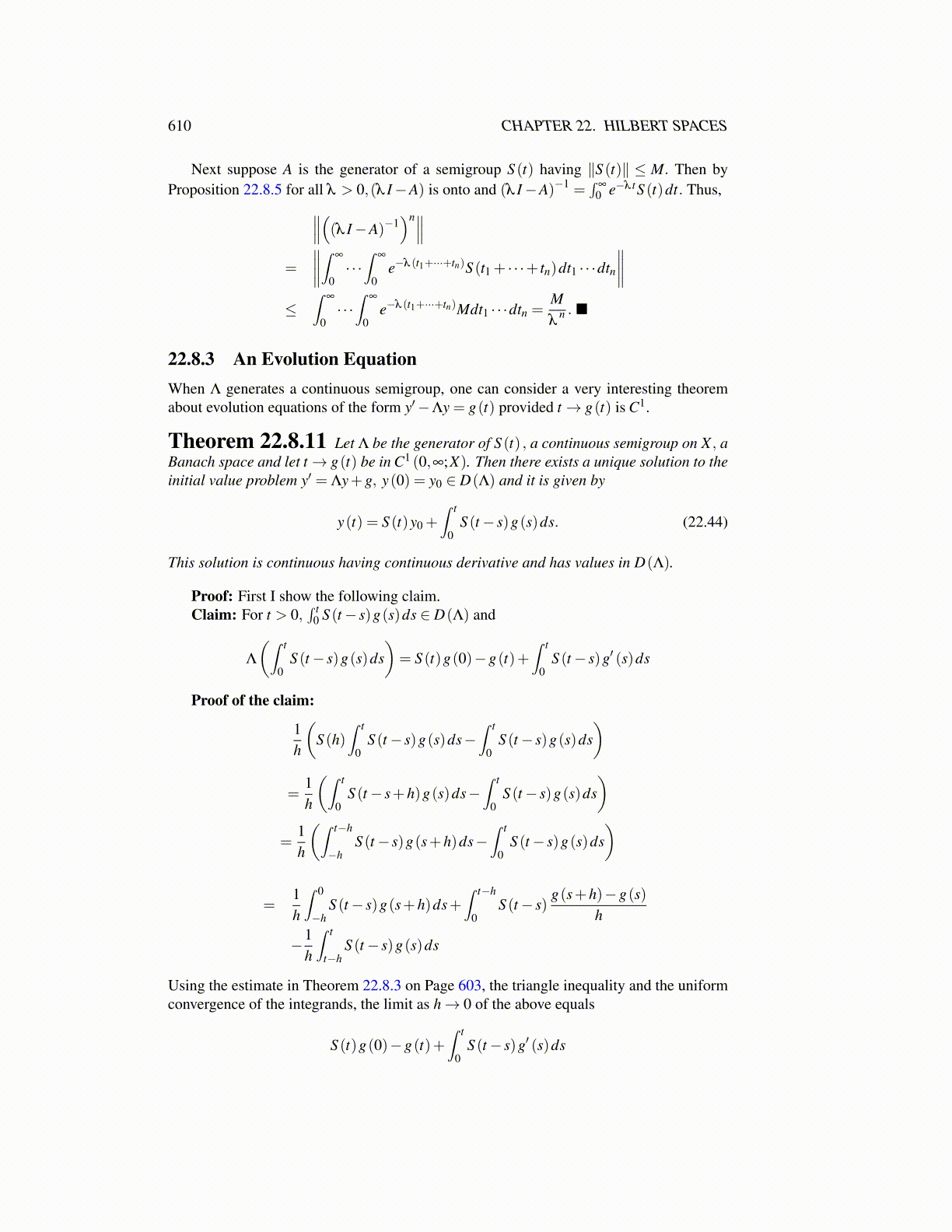
610 CHAPTER 22. HILBERT SPACES
Next suppose A is the generator of a semigroup S (t) having ∥S (t)∥ ≤ M. Then byProposition 22.8.5 for all λ > 0,(λ I−A) is onto and (λ I−A)−1 =
∫∞
0 e−λ tS (t)dt. Thus,∥∥∥((λ I−A)−1)n∥∥∥
=
∥∥∥∥∫ ∞
0· · ·∫
∞
0e−λ (t1+···+tn)S (t1 + · · ·+ tn)dt1 · · ·dtn
∥∥∥∥≤
∫∞
0· · ·∫
∞
0e−λ (t1+···+tn)Mdt1 · · ·dtn =
Mλ
n . ■
22.8.3 An Evolution EquationWhen Λ generates a continuous semigroup, one can consider a very interesting theoremabout evolution equations of the form y′−Λy = g(t) provided t→ g(t) is C1.
Theorem 22.8.11 Let Λ be the generator of S (t) , a continuous semigroup on X , aBanach space and let t→ g(t) be in C1 (0,∞;X). Then there exists a unique solution to theinitial value problem y′ = Λy+g, y(0) = y0 ∈ D(Λ) and it is given by
y(t) = S (t)y0 +∫ t
0S (t− s)g(s)ds. (22.44)
This solution is continuous having continuous derivative and has values in D(Λ).
Proof: First I show the following claim.Claim: For t > 0,
∫ t0 S (t− s)g(s)ds ∈ D(Λ) and
Λ
(∫ t
0S (t− s)g(s)ds
)= S (t)g(0)−g(t)+
∫ t
0S (t− s)g′ (s)ds
Proof of the claim:
1h
(S (h)
∫ t
0S (t− s)g(s)ds−
∫ t
0S (t− s)g(s)ds
)
=1h
(∫ t
0S (t− s+h)g(s)ds−
∫ t
0S (t− s)g(s)ds
)=
1h
(∫ t−h
−hS (t− s)g(s+h)ds−
∫ t
0S (t− s)g(s)ds
)
=1h
∫ 0
−hS (t− s)g(s+h)ds+
∫ t−h
0S (t− s)
g(s+h)−g(s)h
−1h
∫ t
t−hS (t− s)g(s)ds
Using the estimate in Theorem 22.8.3 on Page 603, the triangle inequality and the uniformconvergence of the integrands, the limit as h→ 0 of the above equals
S (t)g(0)−g(t)+∫ t
0S (t− s)g′ (s)ds